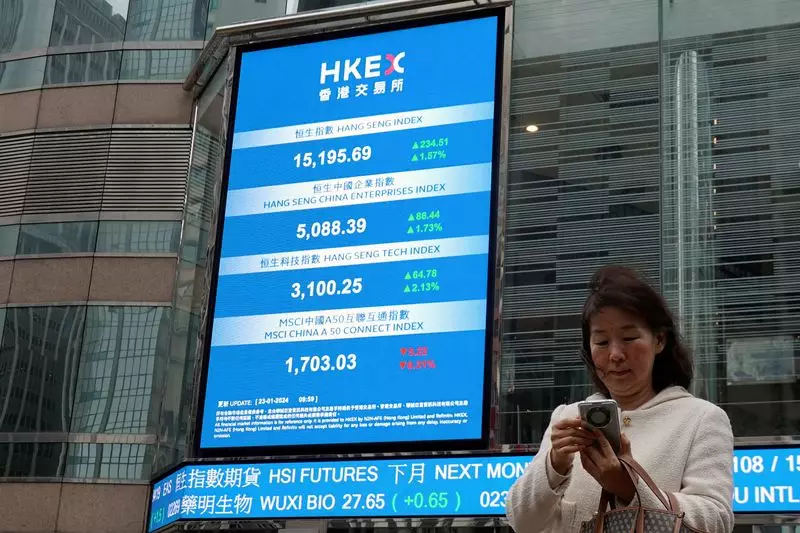As we approach the last trading week of November, the atmosphere in Asian financial markets is rife with uncertainty. Investors, particularly those focused on emerging markets (EM), are hoping for favorable developments after a series of turbulent weeks. Unfortunately, macroeconomic indicators and geopolitical tensions indicate the challenges are far from resolved. The divergence between the United States and the rest of the world is increasingly pronounced, leading to implications that could reverberate through Asian markets and beyond.
The U.S. dollar’s recent rally—an impressive eight-week stretch culminating in a two-year high—serves as a significant barometer of this growing divide. Analysts from TD Securities highlight that a staggering 70% of all inflows into developed market bond funds over the past three months have gone to U.S. assets. This trend is mirrored in equities, where nearly 90% of inflows target American markets. Such statistics raise critical concerns for investors in Asia, as the influx of capital to the U.S. not only pulls liquidity away from emerging markets but also places additional pressure on currencies and investment vehicles in those regions.
The implications are clear: Asian markets are feeling the strain of this capital flight, reflected in an ongoing outflow from dedicated EM bond and equity funds. Barclays reports that these outflows have persisted for six consecutive weeks, a trend that analysts expect will linger in the next few weeks. The situation is exacerbated by geopolitical uncertainties that compound the reluctance of investors to reallocate funds toward EM assets.
A notable case in this context is China, which has emerged as a significant contributor to the overall outflow from emerging market equities. According to TD Securities, over half of last week’s total EM equity outflow was attributed to Chinese markets alone. This trend suggests a lack of confidence not only in China’s economic recovery but also in the broader sentiment toward Asia amidst rising tensions and uncertainties in global trade dynamics.
The MSCI Emerging Markets Index and the Asia ex-Japan Index have both recorded declines in more than five of the past seven weeks, further emphasizing the prevailing negative investor sentiment. The steep weekly losses we observed—around 4.5%—could have signaled a buying opportunity; however, a mere 0.5% rebound indicates widespread hesitance and skepticism among market participants. Investors seem reluctant to declare a “buy” signal, instead choosing to sit on the sidelines until clearer trends emerge.
Reflecting on this persistent negativity, investment strategies are undergoing a significant reevaluation. Strategists at Societe Generale have announced a reduction in their emerging market exposure, cutting it by five percentage points to just 6%. Such actions underscore a growing caution, driven largely by U.S. onshoring policies and broader economic fundamentals favoring American sectors over EM growth trajectories.
As we assess this evolving financial landscape, it’s essential to consider upcoming events that could shift sentiment. Despite the current market malaise, there are key indicators scheduled for release that may provide insight into future market directions. These include rate decisions from central banks in New Zealand and South Korea, alongside vital GDP figures from India and Taiwan and the latest purchasing managers’ index data from China.
The outlook for Asian markets as we step into December remains clouded with uncertainty. The ramifications of a strong U.S. dollar and capital inflows favoring American markets present real challenges for emerging economies in Asia. As investors navigate these turbulent waters, decisions made during this pivotal week could have lasting consequences.
While the indicators for growth and recovery appear muted, the arrival of key economic reports may provide hope for a turnaround. However, with geopolitical tensions lingering and market sentiment remaining bearish, the journey towards stabilization will require patience, strategic foresight, and perhaps a willingness to embrace a hold position until a clearer picture emerges. As such, emerging market investors would do well to approach the upcoming weeks with both caution and awareness of the shifting market dynamics at play.

